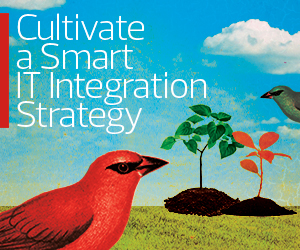Next, the department tackled IT infrastructure, consolidating its two production data centers into one. Faxton-St. Luke’s had a more state-of-the-art data center with available server and storage capacity and power and cooling resources. The IT staff migrated St. Elizabeth’s virtualized applications and data to Faxton-St. Luke’s data center, which runs on Hewlett Packard Enterprise’s blade servers and 3PAR storage hardware.
“The St. Elizabeth site was tight on resources, so it made sense to migrate its applications and data to Faxton-St. Luke’s,” Hildreth says.
The IT team discontinued Faxton-St. Luke’s small disaster recovery site and moved its HPE data center equipment into St. Elizabeth’s data center to serve as the merged health system’s new backup data center.
As for software, the two hospitals used some of the same applications, so the newly combined health system consolidated its VMware, Citrix and Microsoft licenses under one contract for each vendor, which helped save money, Hildreth says.
Standardizing Security for Health IT Integrations
While consolidating hardware and software, Hildreth and his team also focused on bolstering security. The IT staff brought St. Elizabeth up to Faxton-St. Luke’s security standards by installing a demilitarized zone on St. Elizabeth’s network and upgrading to Palo Alto Networks next-generation firewalls.
Each hospital used different anti-virus software for computers, so MVHS standardized on Trend Micro’s endpoint security software. The IT staff also implemented single sign-on, which enabled clinicians to tap their employee badges to automatically log in and out of electronic health records (EHR) systems on their rounds, he says.
LEARN MORE: Get the latest insights about healthcare mergers and acquisitions.
Tackling Electronic Health Record Integration
For the first five years after the merger, the two hospitals continued to operate two separate EHR systems each: one for inpatient care and the other for outpatient care. That made four EHRs the IT staff had to regularly manage. “It was a complete nightmare to maintain,” Hildreth says.
The bulk of the IT integration work finished about two or three years after the merger. But Hildreth and his staff wanted to make sure the IT infrastructure and their integration efforts were stable before they standardized on a single EHR.
Finally, in 2019, IT administrators were ready to tackle EHR consolidation. They explored their options and standardized on Epic. Instead of taking on the upfront expense of buying additional servers and storage to power the new EHR, they went with a more cost-effective option and adopted HPE GreenLake services, using HPE hardware on-premises and paying through a monthly subscription model.
HPE determined MVHS’s EHR hardware needs based on its number of hospital beds and outpatient services and installed HPE Synergy infrastructure and 3PAR StoreServ all-flash storage arrays at Faxton-St. Luke’s data center. HPE pre-provisioned extra capacity so MVHS could scale up or down server and storage capacity as needed. The vendor also performs ongoing maintenance and firmware updates and charges only for the capacity used every month.
DISCOVER: Tips from CIOs on navigating mergers and acquisitions in healthcare.
“HPE GreenLake is pretty awesome. They only bill us for what we use, and they help us patch the hardware and keep the firmware up to date. It saves us a ton of time,” Hildreth says.
MVHS went live with Epic during the summer of 2019. Clinicians benefit from improved workflow and having all their patient records in one place. Patients can access their records, lab results and refill prescriptions via an online portal.
The IT staff only needs to maintain one EHR. “It’s much more streamlined now,” Hildreth says.
Future Integration Plans in the Merger
Though the IT department has successfully merged its infrastructure and software, the health system continues to integrate operations. MVHS is building a new regional medical center that will replace the two existing hospitals. When the new medical center opens in fall 2023, the staff from the two hospitals will work under one roof. In fact, in early 2021, MVHS began merging the medical staff members of its two hospitals into one unified group.
In the meantime, Hildreth and his IT staff continue to make IT improvements and find areas to streamline operations. In 2020, MVHS beefed up security further by subscribing to cloud-based, next-generation endpoint security software that analyzes behavior to spot suspicious activity and block zero-day attacks.
READ MORE: Learn best practices for health IT teams on handling mergers and acquisitions.
From 2020 to 2021, MVHS consolidated its existing third-party cardiology applications. The health system is now implementing additional Epic modules to reduce reliance on third-party apps: Work has started to replace a legacy lab system with Epic’s Beaker lab application, and there’s interest in adopting Epic’s Cupid cardiology application.
MVHS medical staffers will unite in a new regional hospital next year, but the IT department has already provided them with the integrated tech tools they need to operate seamlessly as one team, Hildreth says.
Overall, his department’s multiyear efforts to integrate IT operations have hugely successful, he adds: “It’s worked out really well.”











